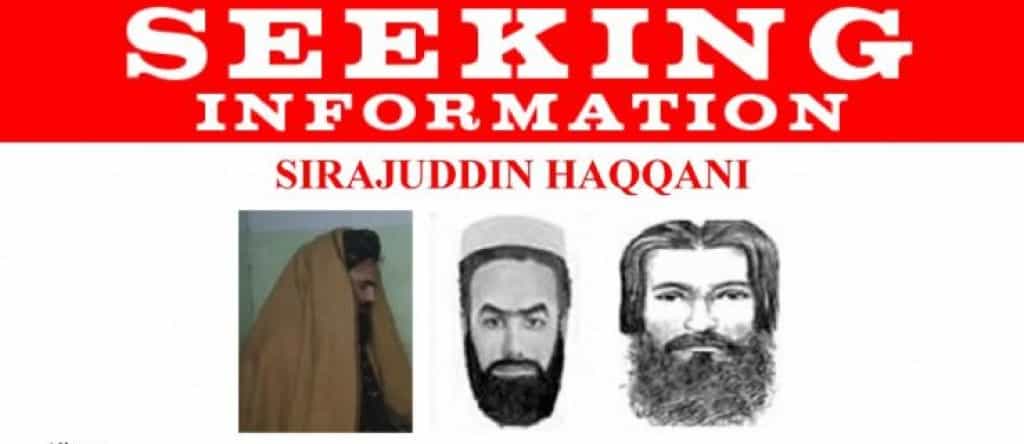
The Taliban and al Qaeda “remain closely aligned and show no indication of breaking ties,” according to a new report issued by a U.N. monitoring team. The U.N.’s member states “report no material change to this relationship, which has grown deeper as a consequence of personal bonds of marriage and shared partnership in struggle, now cemented through second generational ties.”
This and other findings are consistent with previous analyses prepared by the U.N. Security Council’s Analytical Support and Sanctions Monitoring Team. However, the most recent report cites new intelligence as well.
The most intriguing claim is that Sirajuddin Haqqani, the deputy emir of the Taliban’s Islamic Emirate of Afghanistan, is also a member of al Qaeda’s leadership. This intelligence is cited in a footnote, which states that in addition to being a Taliban leader, Sirajuddin “is also assessed to be a member of the wider al Qaeda leadership, but not of the al Qaeda core leadership (the Hattin Shura).”
The U.N. report does not make it clear what position Sirajuddin is thought to hold within al Qaeda’s “wider” leadership. U.S. officials contacted by FDD’s Long War Journal say it is possible that he holds a seat on one or more of al Qaeda’s shura, or advisory councils.
The Hattin Shura council
The Hattin Shura mentioned in the footnote is not defined in the report. U.S. officials say it is the most important strategic body within al Qaeda’s shadowy infrastructure. The Hattin Shura, named after a key battle in Islamic history, has been led by al Qaeda veterans based in Iran, including the jihadist thought to be the group’s current deputy (naib) emir, an Egyptian known as Saif al Adel.
Nearly 20 years after 9/11, there is very little publicly available information concerning al Qaeda’s current internal organization. The Hattin Shura was established circa 2015, when several al Qaeda leaders were reportedly released from some form of Iranian custody. It plays a dominant role in the group’s overall decision-making.
It is possible that the Hattin Shura was indirectly referenced in a previous U.N. report published in 2018. That report stated: “Al Qaeda leaders in the Islamic Republic of Iran have grown more prominent, working with” Ayman al-Zawahiri and “projecting his authority more effectively than he could previously.”
U.S. officials say that the Hattin Shura has been a prominent part of the al Qaeda organization for several years.
Sirajuddin’s close working relationship with al Qaeda is well-documented
Despite the ambiguity regarding Sirajuddin’s claimed role, his close-knit relationship with al Qaeda has been documented by multiple sources.
For example, files recovered in Osama bin Laden’s compound discuss how al Qaeda was working with Sirajuddin to coordinate attacks on NATO forces in Afghanistan in 2010. The files also outline al Qaeda’s plan to coerce the Pakistani state into ceasefire negotiations. That plan leveraged Sirajuddin’s ability to act as a liaison with elements of the Pakistani military and intelligence establishment.
Although the Taliban’s propagandists are rarely truthful concerning the group’s relationship with al Qaeda, they do occasionally let the mask slip. In Dec. 2016, Manba’ al-Jihad Media for Production, which has long been affiliated with the Haqqani Network, released a video entitled, “Bond of Nation with the Mujahideen.” The video celebrated the unbroken, longstanding alliance between the Taliban and al Qaeda. It featured audio commentary from Sirajuddin, as well as other Taliban and al Qaeda figures.
In 2019, al Qaeda’s general command eulogized Sirajuddin’s father, Jalaluddin Haqqani. Jalaluddin was one of Osama bin Laden’s earliest mentors and helped incubate al Qaeda. In the eulogy, al Qaeda specifically addressed Sirajuddin Haqqani and the Taliban’s top leader, Haibatullah Akhundzada, as “our emirs in the Islamic Emirate.” Al Qaeda’s general command said at the time that it took “solace in the fact” that Sirajuddin is the “deputy of the Islamic Emirate of Afghanistan’s Emir of the Faithful” and is following in his father’s “footsteps.” In his own subsequent, personal eulogy for Jalaluddin, Ayman al Zawahiri prayed for Allah to provide Sirajuddin, whom he describes as his “eminence,” with comfort and “patience.”
Sirajuddin inherited the leadership of the Haqqani Network from his father following the toppling of the Taliban’s regime in late 2001. The Haqqanis have been waging jihad to restore the Taliban’s Islamic Emirate of Afghanistan ever since.
Other recent reporting on the Haqqani Network and al Qaeda
Previous U.N. reports have relayed intelligence concerning the ongoing relationship between the Haqqani Network, an integral part of the Taliban’s joint venture, and al Qaeda. This is unsurprising as members of the two networks have been blood brothers since the 1980s.
For instance, a report released by the U.N. monitoring team in May 2020 stated that the Taliban “regularly consulted” with al Qaeda during negotiations with the U.S. in Doha. That report cited intelligence indicating there were at least six reported high-level “meetings between Al Qaeda and [the] Taliban senior leadership held over the past 12 months.” Some of those meetings reportedly involved officials from the Haqqani Network. The monitoring team cited unnamed “interlocutors” as saying that Ayman al Zawahiri himself “met with members of the Haqqani Network in February 2020.” The Haqqani delegation included Hafiz Azizuddin Haqqani and Yahya Haqqani. Yahya is Sirajuddin’s brother-in-law and has worked with al Qaeda for more than a decade. The Haqqani team “consulted” with Zawahiri “over the agreement with the United States and the peace process,” according to the U.N.
In early Jan., the U.S. Treasury Department has also referenced intelligence reports indicating that senior Haqqani Network officials “have discussed forming a new joint unit of armed fighters in cooperation with and funded by al Qaeda.”
Note: The spelling of al Qaeda has been made consistent throughout this article, including in citations from other sources that use alternative spellings.







